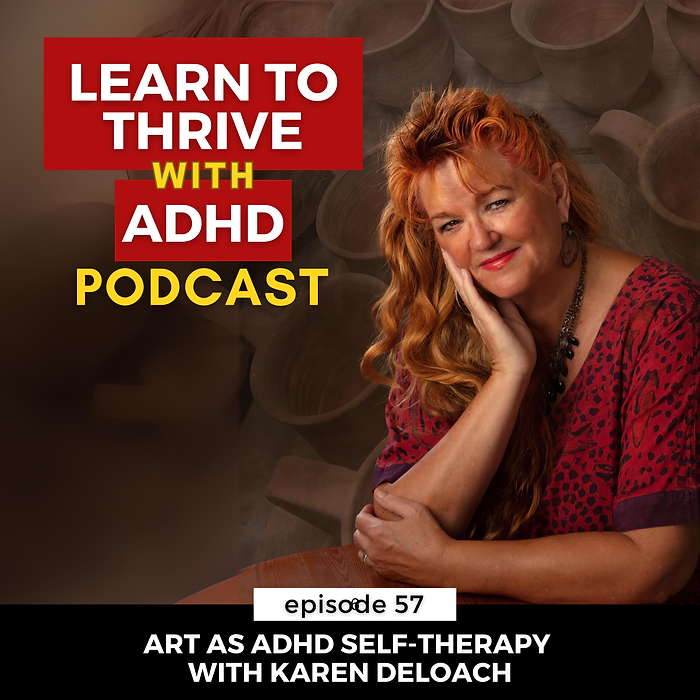Are you curious about how creativity can be a powerful tool for personal growth and emotional healing? In this insightful episode, Karen DeLoach, an artist, art teacher, and creativity specialist, shares her experiences of using art to help people with ADHD, autism, and other challenges express themselves and find confidence. She also delves into how creativity can serve as a therapeutic practice for individuals of all ages and abilities.
Learn how Karen’s approach to art has transformed lives by building emotional resilience and activating both the right and left brain. Discover how even small creative practices can bring joy, reduce stress, and lead to personal breakthroughs, no matter your age or life circumstances.
What you’ll learn:
- How art and creativity can help individuals with ADHD, dyslexia, and autism express themselves
- The benefits of engaging both the right and left brain through creative practices
- Practical ways to incorporate art and creativity into your daily life, even with a busy schedule
- The connection between creativity and mental health, including reducing stress and releasing serotonin
- Why you don’t have to be a professional artist to enjoy the benefits of creative expression
- How small, consistent creative practices can improve mental well-being and spark joy
Creativity as Self-Therapy
Throughout the episode, Karen shares inspiring stories of how art has helped individuals overcome personal challenges, from students with ADHD to adults facing emotional and physical health struggles. She highlights the power of engaging in the arts as a way to rewire the brain, build resilience, and find fulfillment.
Whether you’re new to creative activities or an experienced artist, Karen’s advice will encourage you to explore creativity as a means of self-therapy and emotional well-being.
“Art is self therapy. There is wellness through creativity. So how can each one of us, no matter what our challenges are, what age we are… have it bring healing to our body and our mind and our emotions through the arts.” – Karen DeLoach
Karen and Mande explore practical steps you can take to incorporate creativity into your daily routine. Whether it’s gardening, painting, or singing in the shower, you’ll learn how small actions can make a big impact on your emotional and mental health.
Useful Links Mentioned:
- Learn more about Karen’s online art classes: Get Creative with Karen
- Follow Karen on Facebook: Karen DeLoach Art
- Join Karen’s community for Christian creatives: Christian Creatives on Facebook
- Send Mande a text message: https://www.buzzsprout.com/twilio/text_messages/1954263/open_sms
- Learn more about private coaching with Mande: https://www.learntothrivewithadhd.com/getcoached
Embrace the joy and fulfillment that come with tapping into your creative potential! This episode offers practical tips and inspiration for anyone looking to add more creativity and joy to their lives. Whether you have 20 minutes or an hour, engaging in creative activities can significantly improve your mood, reduce stress, and enhance your overall well-being.
Share your creative journey with us in the comments or on social media. We’d love to hear how you’re adding more joy to your life through art and creativity!
#ADHDCreativity #ArtAsTherapy #NeurodivergentStrengths #CreativeExpression #MentalHealthAwareness #SelfTherapyThroughArt #UnlockYourCreativity #RightBrainActivation





